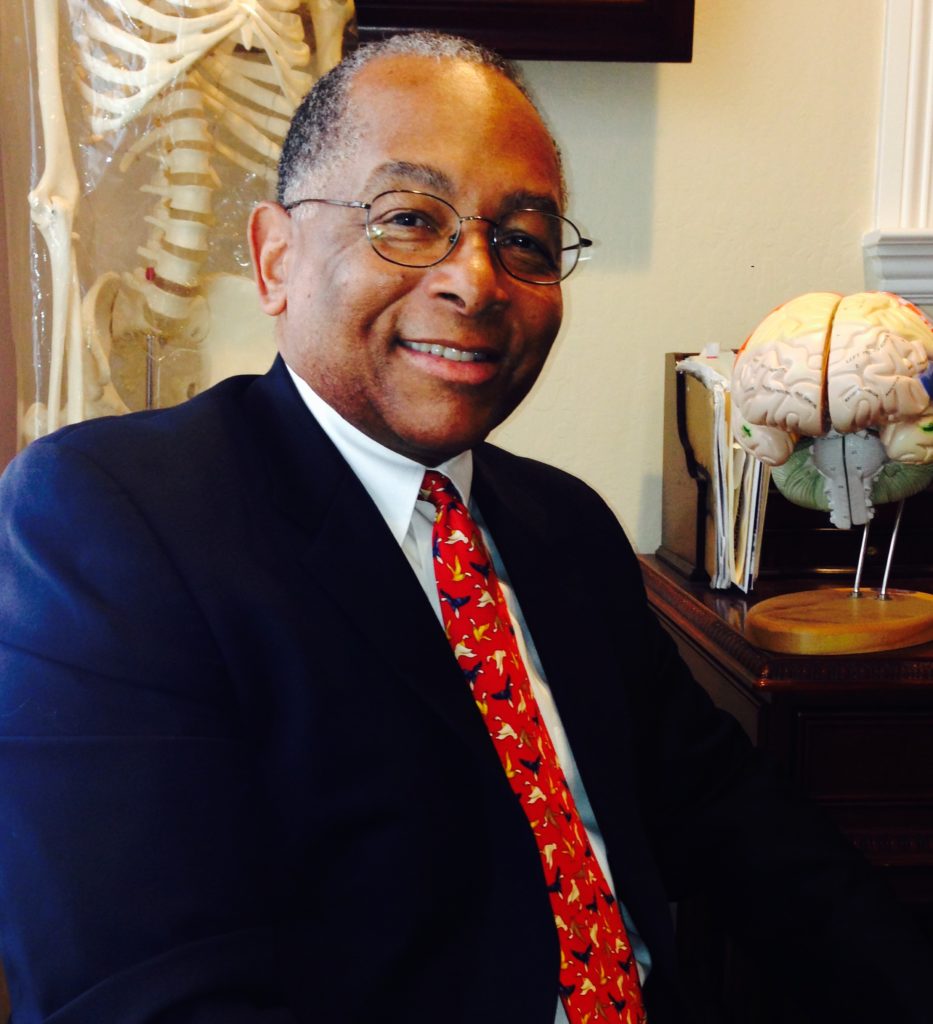Kenneth Wesson says that understanding how the brain works and learns can make you a better teacher.

Wesson, a former higher education faculty member and administrator, is a proponent of using neuroscience to improve education. By developing an understanding of how the human brain works and how the brain learns, he says, educators can reach more students, not just those who have traditionally been successful.
“You cannot talk about learning without discussing what’s happening inside the brain,” says Wesson, who will speak at CTA’s Instruction & Professional Development pre-conference before both Good Teaching Conference-North and -South (in February and March 2019; see below for details). He points to the research indicating that the brain responds best to first-hand experiences rather than the traditional instructional sequence of lecture, memorize and test.
Wesson is also a strong advocate of access and equity for all students, and notes that historical inequalities, including health disparities impacting early brain development, play a role in student achievement outcomes. “We cannot ignore the impact of the social factors impacting the developing brain, and consequently, student learning,” he says.
Indeed, poverty, underdeveloped language skills, trauma and stress are familiar issues to California educators. Wesson, citing observations made in such challenging environments as Upper Appalachia, America’s inner cities and the Palestinian territories in Israel, says that by understanding evidence-based strategies in “brain-considerate learning,” we can reach all students.
“Effective teachers know as much about their children — the conditions in which they live and are reared — as they know about subject matter,” he says.
— Kenneth Wesson
A few of Wesson’s thoughts on teaching all students using the neuroscience of learning:
A robust academic vocabulary
“For most students, vocabulary is the foundation of the ‘achievement gap.’ Nothing is more important to academic success than a robust academic vocabulary. Neuroscientists say, ‘Words are used to think, not just to communicate.’ A student with a limited vocabulary has corresponding learning limitations.
“Language-rich experiences foster academic language. Give students an apple and let them touch it, feel it, taste it, listen to it crunch, and afterwards list the relevant words emerging from the experience: red, smooth, moist, cold, crunchy, fresh, delicious, waxy, sour, tart, etc., are words which will enhance recall of the experience with the high-utility words used across the curriculum.
“Teachers should model linguistic precision. Instead of asking students, ‘What do you think will happen?,’ ask ‘What do you predict will occur, can someone hypothesize for us?’ Students will encounter these academic words throughout the school day, and in instructions during standardized tests. Even in mathematics and science, have students use (not just read) words like osmosis and metamorphosis, which are often used metaphorically in literature.”
Use all of the senses — and visualize
“Deep and long-lasting learning requires using our senses. Enhancing academic language within every discipline — interdisciplinarity — is especially valuable for linguistically impoverished students. In math, have children say, ‘When solving this problem, I first … FILL IN THE BLANK …. Next, I …, and then, I check the reasonableness by ….’ Writing out their internal dialogue improves students’ thinking. It is also advantageous for students to draw pictures of the problem and their procedures for solving it.
“Nothing is more important to academic success than a robust academic vocabulary.”
— Kenneth Wesson
“In one exercise, we place a red, a blue and a yellow toy car into a dark tube. We ask, ‘In what order will the cars exit the right end? The left end?’ We flip the tube and pose the same questions. Manipulating those images correctly in the mind’s eye, using one’s working memory, indicates the child’s readiness for symbolic mathematics.
“Educators often distribute math worksheets with 50 nearly identical problems. [Research has] found that after the sixth problem, the next 44 make virtually no contribution to cognitive growth. Instead, additional visualization and experience with manipulatives improved mathematical thinking.”
Soften the border between disciplines
“Students must actively (through interactions with the teacher and peers) connect key concepts across the disciplines, understanding that each subject area is merely a part of the same whole — ‘knowledge.’
“The human brain evolved from having lengthy periods to learn about objects and events. Our 55-minute-long classes, with subjects changing hourly, should be exchanged for 90-minute periods of learning focused around an intriguing phenomenon or theme. Finland has adopted this approach and thereby ‘softens’ the artificial borders between academic disciplines. Students learn in the same manner that adults solve problems in the real world — using all disciplines simultaneously.”
Experiential, connected learning
“Brain research tells us that students learn best by immersing themselves deeply in investigations and projects, where they experience, reflect, write, draw, think and engage in constant dialogue and discourse — opportunities for language production. Classrooms should be buzzing with conversations where cognitive development emerges naturally.
“Project Based Learning, and other learner-centered instructional strategies, typify this approach. We have STEM and STEAM, along with my model, S.T.2R.E.A.M. (Science, Technology, Thematic instruction, Reading/Language Arts, Engineering, Art and Mathematics) learning, which replicates how professionals solve real-world global challenges. The goal of formal education is not to accumulate knowledge, but to learn its wide range of applications.”
Professional learning for teachers
“We know from research that increases in professional learning opportunities sponsor improvements in student achievement. Between 10-20 percent of a teacher’s time should be devoted to professional learning. It could begin with a facilitator sharing the latest research, followed by teachers holding weekly/monthly ‘S.T.2R.E.A.M.-posiums,’ where faculty from all disciplines engage in rich conversations about what is working most effectively with their students. Continuously learning new strategies for reaching a greater percentage of our diverse California student body is how one becomes an effective teacher.”
More on the Science of Learning
Hear Kenneth Wesson speak at CTA’s Instruction & Professional Development pre-conference to the Good Teaching Conference, Feb. 1, 2019, in San Jose, and March 22 in Garden Grove. Register at ctago.org.
The Discussion 0 comments Post a Comment